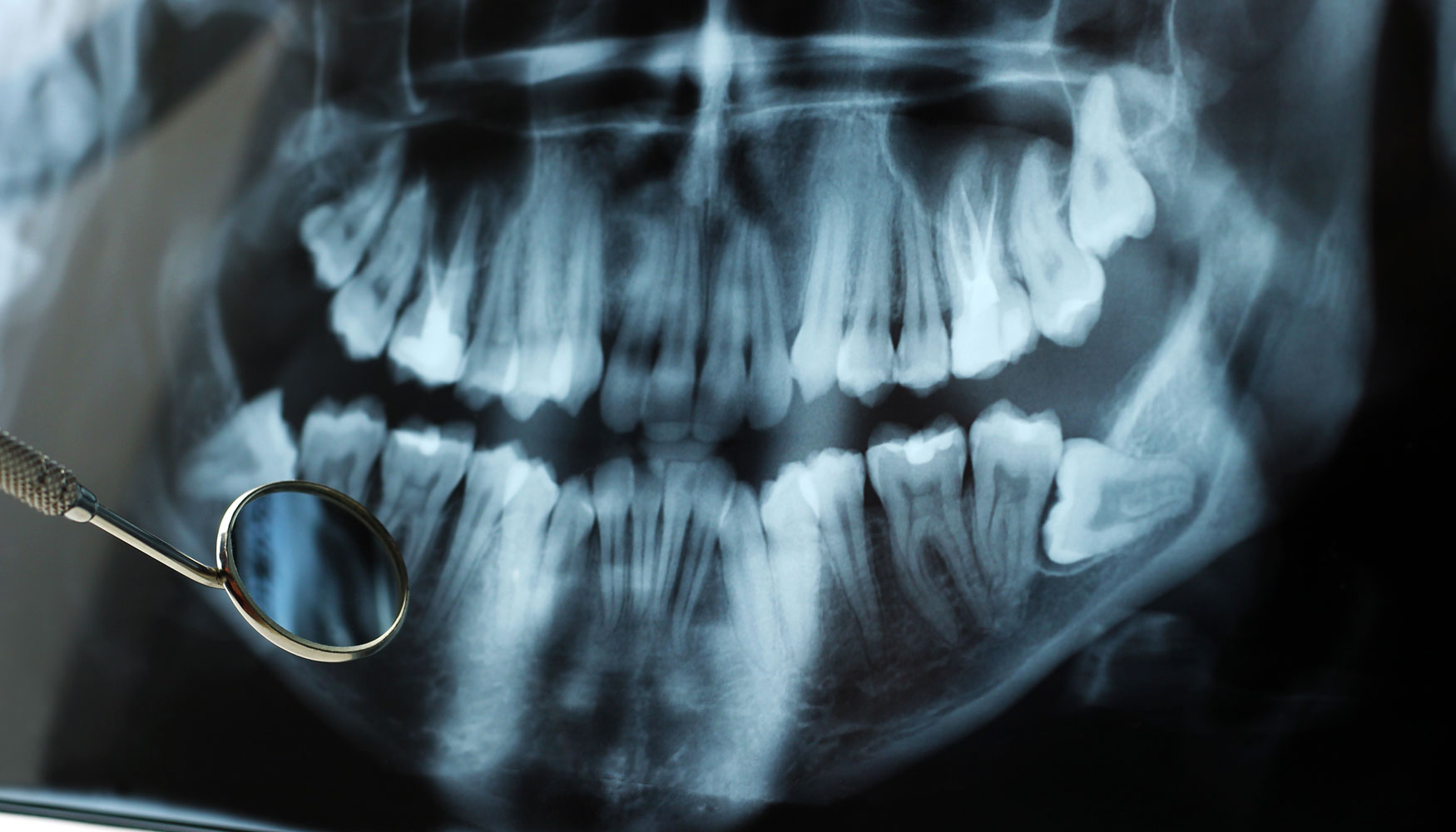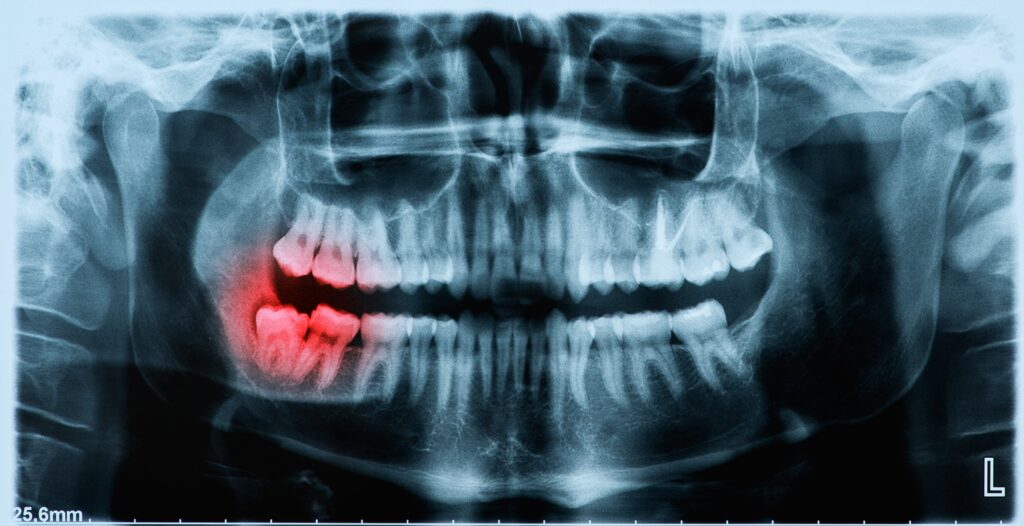

Sometimes they come through at strange angles and may cause uneven wear on other teeth. Crowding: Wisdom teeth may not have enough room to come into the mouth in a good position for cleaning and eating.Decay: A tooth that is partially covered by gum may get decay.This condition is known as "pericoronitis" ( infection around the crown). Bacteria can breed and cleaning this area can be nearly impossible. Infected gums: A tooth that has partially broken through the gums allows bacteria to enter the area around the crown of the tooth.This can be due to infected gums or may be part of the normal process of eruption. Pain :As the wisdom teeth move through bone and gum to their final position people may experience some degree of pain or discomfort.Often the only way this problem is detected is by radiographs (x-rays). A cyst can form and this may damage adjacent teeth, the jaw and nerves. Cyst formation: A totally unerupted wisdom tooth may be surrounded by fluid.Usually when teeth don't grow into the mouth it is because they don't have enough room to fit in. Unerupted wisdom teeth: These are teeth that have not grown into the mouth.A radiograph or x-ray will show whether the tooth is actually missing altogether or just remaining within the jaw bones.Sometimes they do not form at all. Sometimes wisdom teeth are missing from the mouth because they remain under the gums.The total number of teeth in the mouth is 32. Two upper wisdom teeth and two lower wisdom teeth.
Wisdom teeth xray series#
Wisdom teeth are the third of the molar series of teeth to grow in your mouth (the first molars grow when you are about 6 years and the second molars grow when you are about 12 years old).

They derive their name "wisdom teeth" from this being the time of the "getting of wisdom" as you progress from "youth" to "adulthood".


 0 kommentar(er)
0 kommentar(er)
